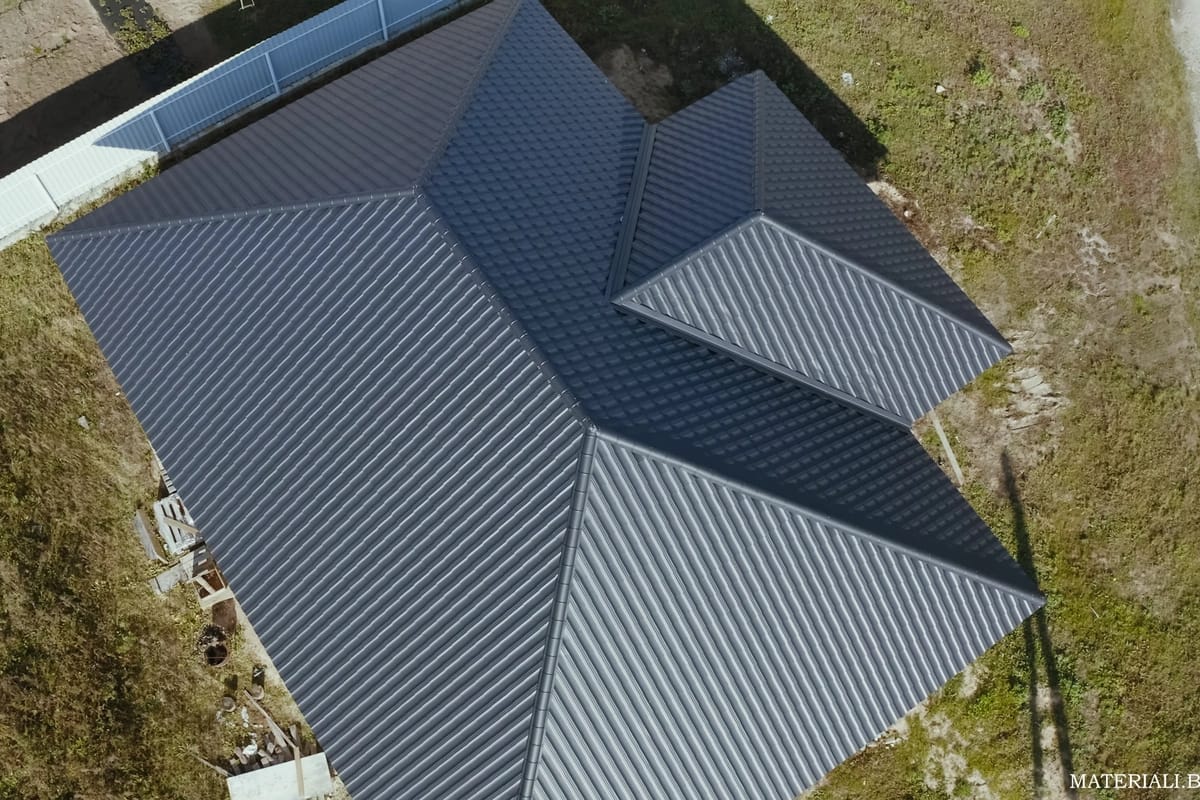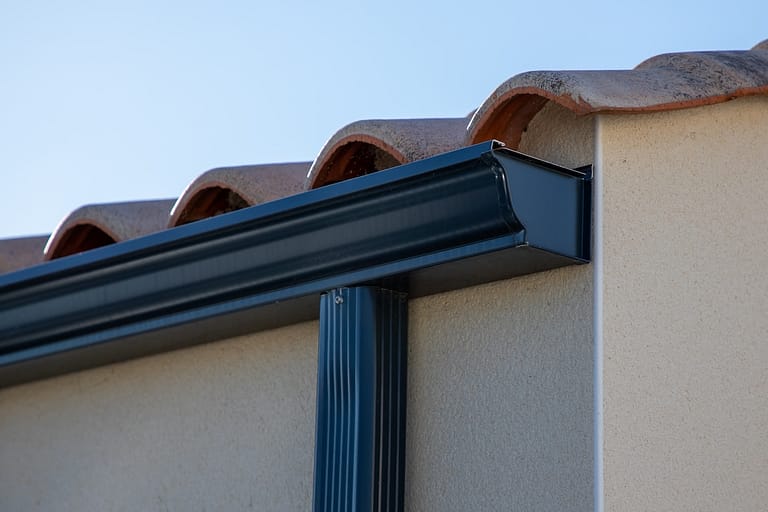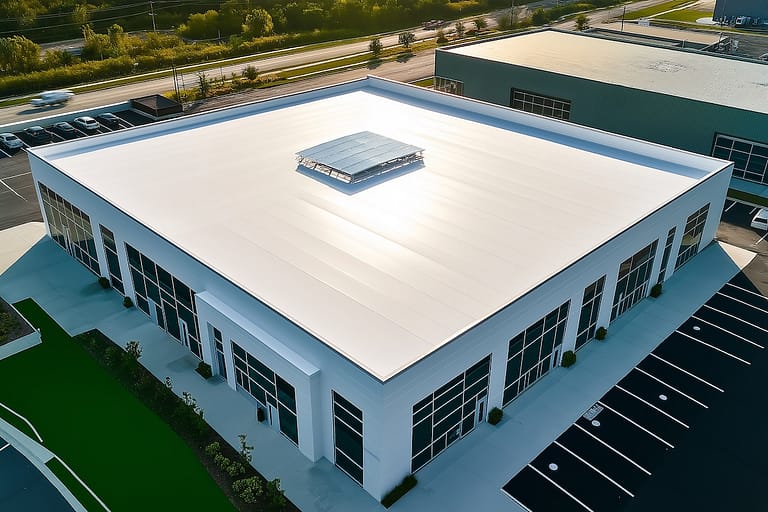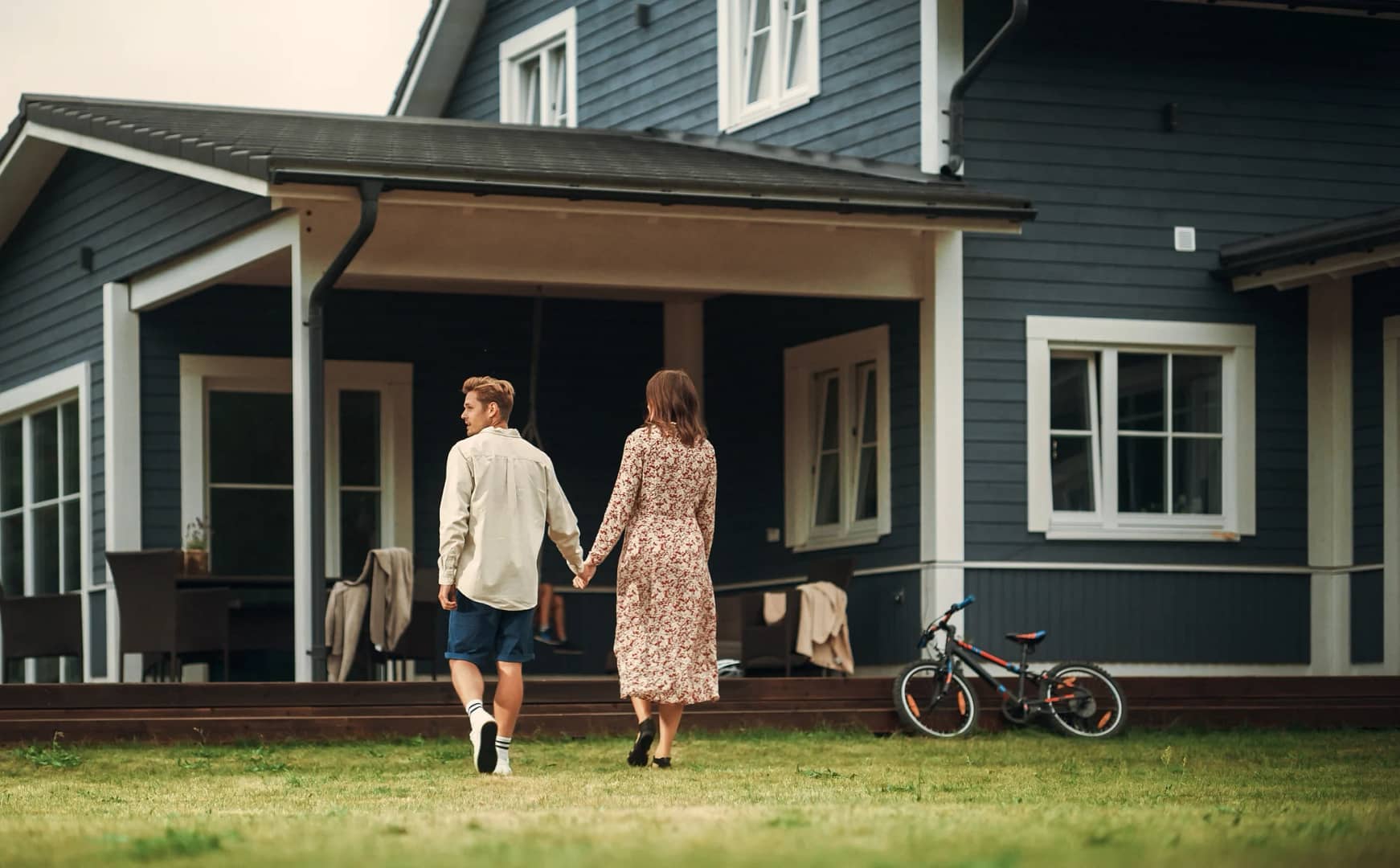When considering a new roof for your home or business, lifespan is likely one of your biggest concerns—and for good reason. A roof is a major investment, and choosing the wrong material can mean costly repairs or early replacement.
Metal roofing has surged in popularity over the last decade, not just for its sleek, modern aesthetic, but also for its reputation as a long-lasting, low-maintenance alternative to traditional asphalt shingles.
But how long does a metal roof last? Is it worth the upfront cost? And what factors influence its lifespan—like installation, environment, or material type?
In this guide, we’ll break down:
- The average lifespan of different metal roofing materials (like aluminum, steel, and copper)
- How metal compares to shingles, tile, and slate
- Key factors that impact performance, from weather to roof pitch
- Tips to maximize your roof’s durability and ROI
Whether you’re building new, upgrading a fixer-upper, or just planning ahead, understanding the real-world performance of metal roofing will help you make a smart, future-proof decision.
Understanding the Different Types of Metal Roofing
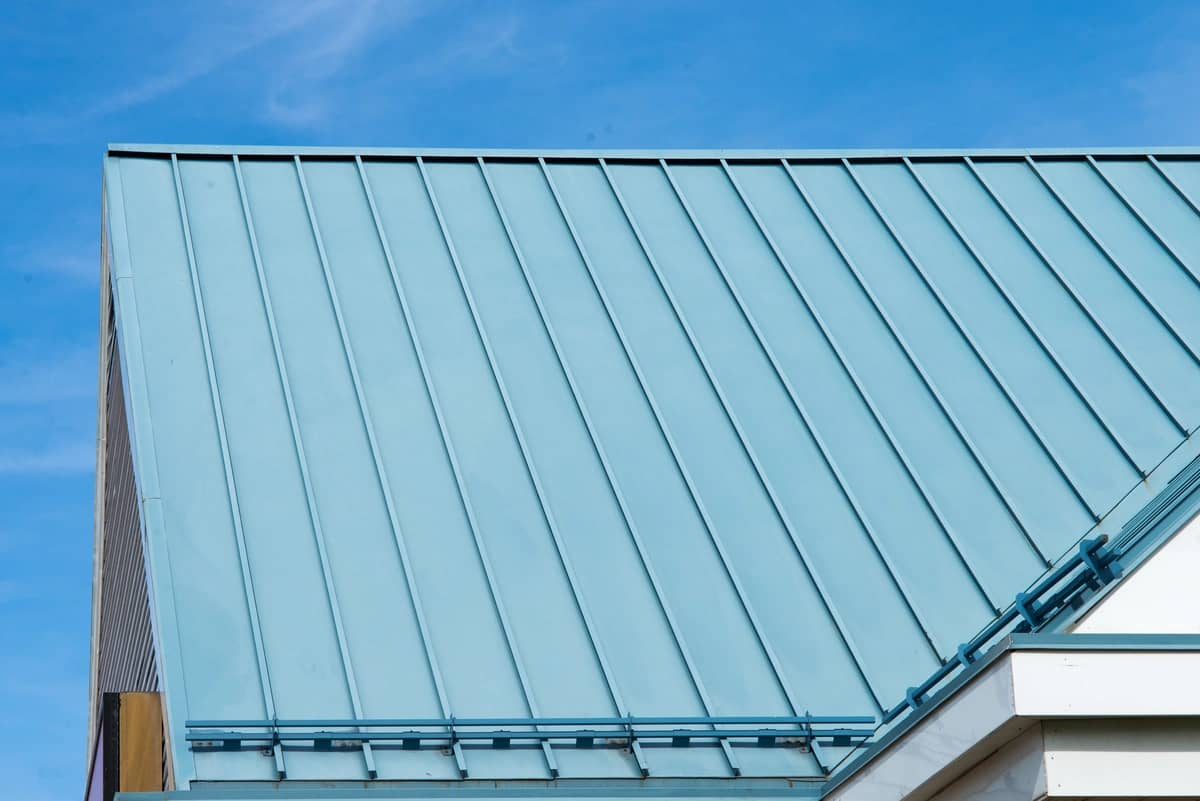
Metal roofing has grown in popularity over the years due to its durability, aesthetic appeal, and environmental benefits. Made from materials like steel, aluminum, copper, and zinc, metal roofs offer a variety of styles and finishes to complement any architectural design.
Types of Metal Roofing
Here’s a breakdown of the most common types of metal roofing used in residential construction:
1. Steel Roofing (Galvanized & Galvalume)
Steel is one of the most popular and cost-effective metal roofing options. Galvanized steel is coated with zinc to resist corrosion, while Galvalume combines aluminum and zinc for even better performance.
- Lifespan: 40–60 years
- Best For: Midwestern and Northern climates prone to snow and hail
2. Aluminum Roofing
Lightweight, corrosion-resistant, and ideal for coastal regions where salty air can destroy other materials.
- Lifespan: 40–50 years
- Best For: Coastal homes or areas with high humidity
3. Copper Roofing
Premium in both look and price, copper develops a beautiful patina over time and lasts for generations with minimal maintenance.
- Lifespan: 70–100+ years
- Best For: Historic homes, luxury builds, or anyone wanting a standout feature
4. Zinc Roofing
Less common but growing in popularity due to its self-healing properties and unique matte finish.
- Lifespan: 60–90 years
- Best For: Modern or custom architectural homes with high-end finishes
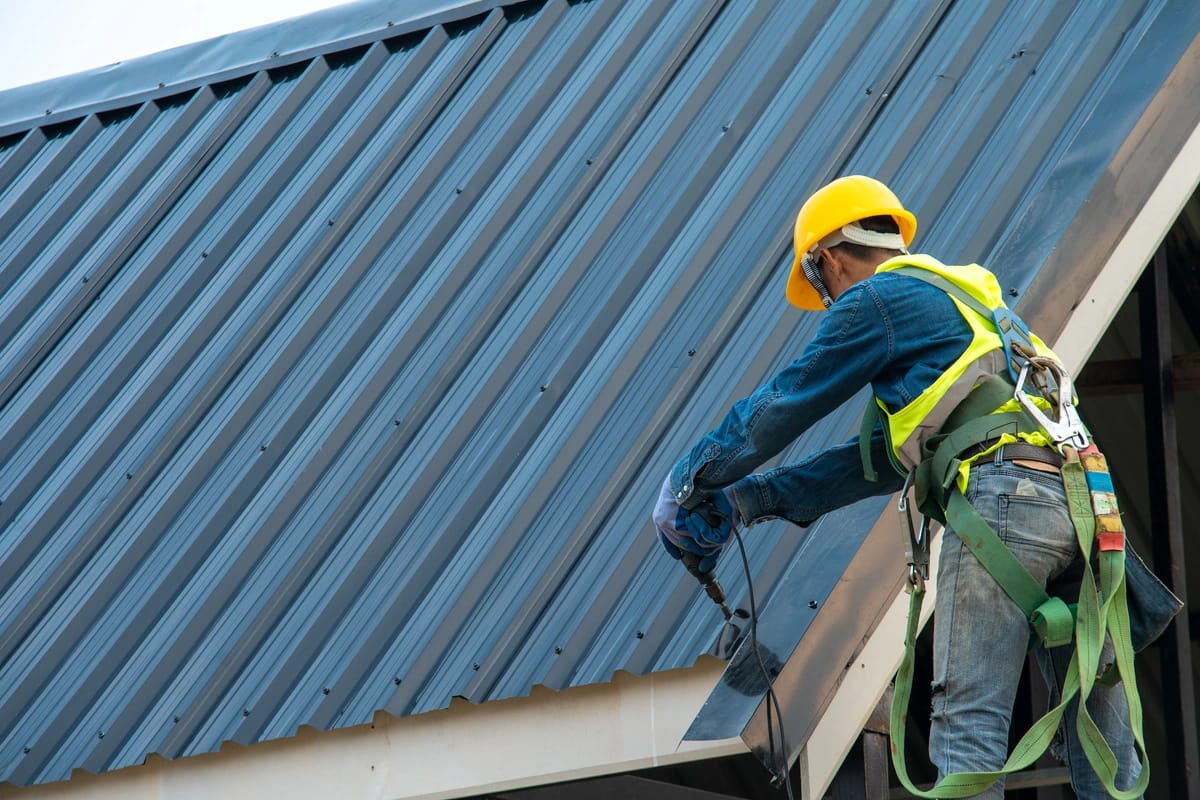
Choosing the right metal comes down to your budget, your location, and how much longevity and aesthetics matter to you.
How Long Does a Metal Roof Last?
On average, a metal roof will last 40 to 70 years, significantly outpacing traditional roofing materials like asphalt shingles. In some cases, premium metals such as copper or zinc can last well over 100 years with proper care.
A metal roof isn’t just durable—it’s built for longevity. But how long it actually lasts depends on several factors beyond the metal itself.
Factors Influencing Metal Roof Longevity
1. Material Type
- Steel and Aluminum: Last 40–60 years depending on finish and environment
- Copper and Zinc: Can exceed 100 years with minimal degradation
2. Installation Quality
- Poor installation can shorten even the best roof’s lifespan. Always hire an experienced metal roofing contractor who understands proper flashing, fastener placement, and ventilation.
3. Maintenance Habits
- Metal roofs are low maintenance, but not maintenance-free. Keep gutters clear, inspect for loose panels or fasteners, and remove debris after storms.
4. Climate and Exposure
- Homes near the coast or in high-snow regions face more wear and tear. Salt, ice, and UV rays can reduce lifespan without the right protective finishes.
5. Protective Coatings & Paint Systems
- Kynar 500® or similar PVDF coatings protect against fading, corrosion, and chalking. Investing in a high-quality finish can add 10–20 years to your roof’s life.
Comparing Metal Roofing to Other Roofing Materials
Choosing a roofing material isn’t just about cost—it’s about how long your investment will last and how well it performs over time. Metal roofs may cost more upfront, but their longer lifespan, lower maintenance, and superior durability often make them the better long-term value.
| Roofing Material | Average Lifespan | Durability | Maintenance | Cost |
|---|---|---|---|---|
| Metal (Steel, Aluminum) | 40–70+ years | Excellent – resists wind, fire, hail, pests | Low – occasional inspection | $$$ |
| Copper/Zinc (Premium Metal) | 70–100+ years | Exceptional – corrosion-resistant, long-lasting | Very Low – minimal upkeep | $$$$+ |
| Asphalt Shingles | 15–30 years | Moderate – vulnerable to wind, sun, algae | Moderate – periodic repair | $ |
| Wood Shakes | 20–40 years | Good – natural insulation, but fire-prone | High – moss, pests, moisture | $$ |
| Clay/Concrete Tile | 50–100 years | Excellent – very durable, heavy | Low – some underlayment needs | $$$ |
| Slate | 75–100+ years | Outstanding – stone-like durability | Low – but fragile to walk on | $$$$+ |
🏆 Key Takeaways
- Metal roofs outperform asphalt in nearly every category except upfront cost.
- Premium metals (like copper and zinc) can compete with or exceed tile and slate in longevity—with far less weight and structural demands.
- If you’re looking for a low-maintenance, high-return roofing solution, metal is one of the best choices on the market—especially when installed properly and paired with quality coatings.
Benefits of Metal Roofing Beyond Longevity
While longevity is a significant advantage, metal roofing offers several other benefits that make it an attractive choice for homeowners and businesses:
⚡️ Energy Efficiency
Metal roofs reflect solar radiant heat, which can reduce indoor cooling costs by up to 25% in warmer months. Many metal roofing systems also feature reflective coatings that enhance thermal performance, qualifying them for ENERGY STAR® ratings.
🌿 Environmental Sustainability
Most metal roofing products are made from recycled materials—often 25–95%—and are 100% recyclable at the end of their life. This makes metal roofing a far more sustainable option compared to asphalt shingles, which typically end up in landfills.
🔥 Fire Resistance
Metal is naturally non-combustible, and most products carry a Class A fire rating, the highest possible. For homeowners in wildfire-prone regions, this provides added peace of mind and may even lower insurance premiums.
🏋️♀️ Lightweight Design
Compared to slate, clay, or concrete tiles, metal roofing is significantly lighter. This reduces stress on the building’s structure and can eliminate the need for costly structural reinforcements during installation or re-roofing.
✨ Aesthetic Appeal
Modern metal roofing comes in a wide range of styles, textures, and colors. Whether you’re going for a traditional look (like shake or tile) or prefer a sleek, contemporary style like standing seam panels, metal roofing offers design flexibility that enhances curb appeal.
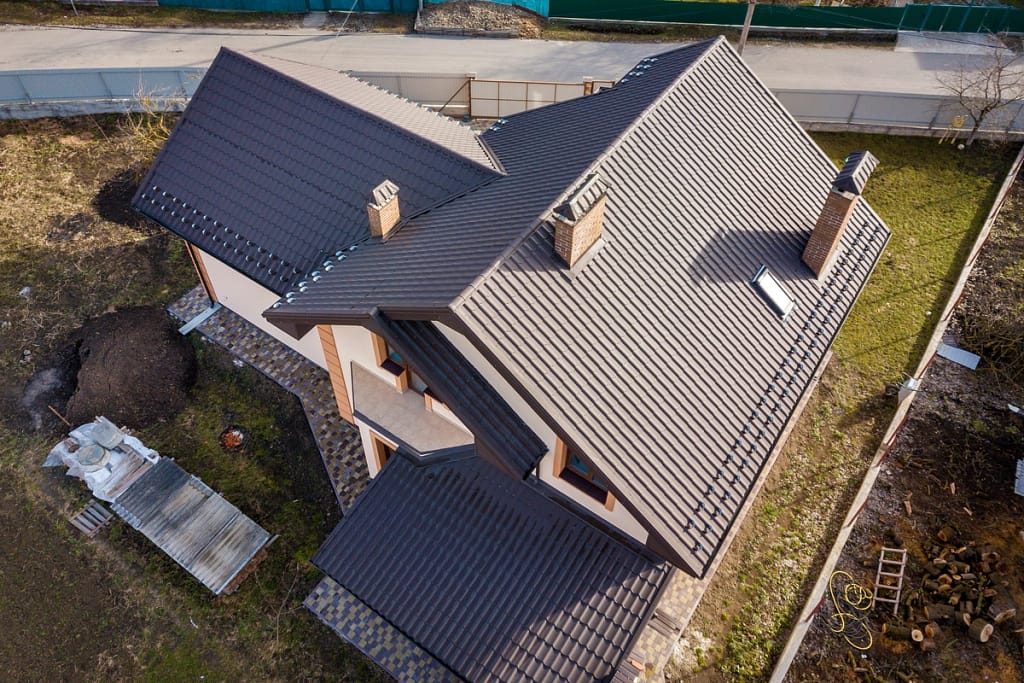
Tips to Extend the Life of Your Metal Roof
Regular maintenance is crucial for maximizing the lifespan of your metal roof. Here are some tips to keep your roof in top condition:
🛠️ 1. Schedule Regular Inspections
Have your roof professionally inspected at least once every 1–2 years, especially after major storms. Catching minor issues early—like loose fasteners or sealant failures—can prevent major repairs later.
🧹 2. Keep Gutters and Roof Surfaces Clean
Blocked gutters can cause water to back up under panels, leading to premature corrosion. Clear debris like leaves, branches, and snow buildup, especially around roof valleys and flashing.
⚠️ 3. Avoid Walking on the Roof
Walking can dent or damage metal panels, especially with softer metals like aluminum or copper. If access is needed, always use walk pads or hire a pro.
🧴 4. Maintain Protective Coatings
If your roof has a painted finish or coating (like Kynar 500®), inspect it for fading or chalking. Recoating may be needed after a few decades to maintain protection and appearance.
🌬 5. Address Ventilation and Moisture
Make sure your attic is properly ventilated. Poor airflow can cause heat and moisture buildup under the roof, reducing performance and lifespan over time.
🦺 6. Professional Inspections:
Schedule periodic inspections by roofing professionals to identify and address any hidden issues.
O’Donnell Does Metal Roof Replacement
If you’re looking for a roofing option that offers unmatched longevity, weather resistance, energy savings, and low maintenance—metal roofing is one of the best investments you can make. While the upfront cost is higher than asphalt shingles, the long-term benefits more than pay off in reduced repairs, energy efficiency, and resale value. With an impressive lifespan of 40 to 70 years, and even longer for some materials, metal roofs outlast many traditional roofing options.
Ready to take the next step in securing a long-lasting roof for your property? Contact our expert team today to learn more about our metal roofing solutions and schedule a consultation. Your future self (and your future roof) will thank you!
FAQs
How long does a metal roof last compared to shingles?
Metal roofs typically last 2–3 times longer than asphalt shingles. While shingles last 15–30 years, metal roofs can last 40–70+ years with proper care.
Is a metal roof noisy during rain?
Not necessarily. When installed with solid sheathing and insulation, metal roofs are no noisier than other materials.
Are metal roofs energy efficient?
Absolutely. Most metal roofs reflect solar heat and may lower cooling costs by up to 25%, especially when paired with reflective coatings.
